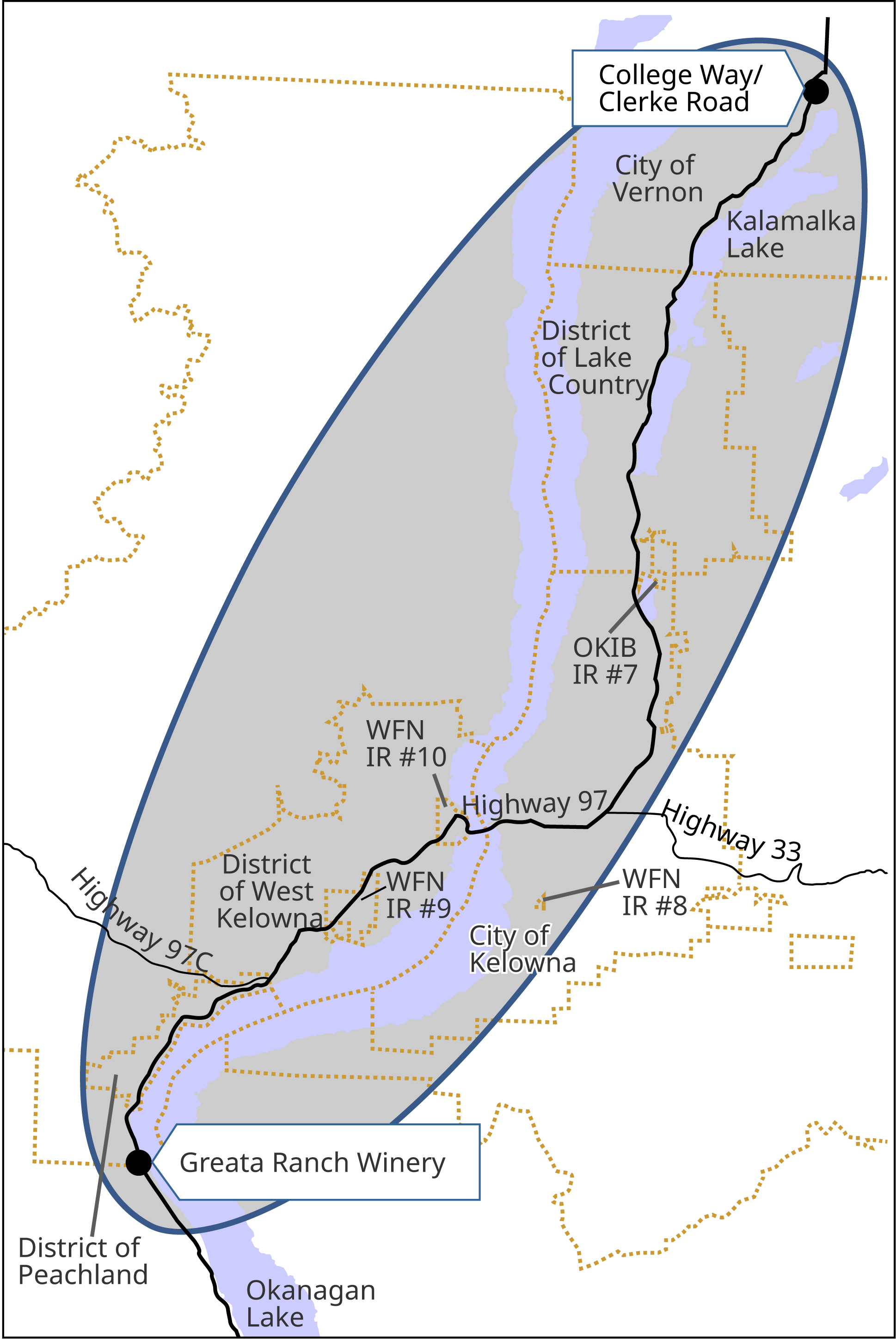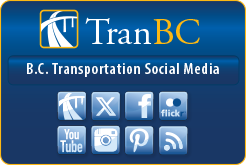Central Okanagan Planning Study
The Central Okanagan Integrated Transportation Strategy is the next phase of the Central Okanagan Planning Study (COPS) and the next step in the development of an integrated plan to improve the primary highway corridor through the Central Okanagan.

The purpose of the Central Okanagan Planning Study was to understand transportation needs in the area and to develop route proposals to address mobility issues. The study looked at the needs of the travelling public, community land use plans, provincial transportation priorities and preferred locations for an alternate Okanagan Lake crossing.
The study team collaborated with the local governments, Indigenous communities and the Regional District of the Central Okanagan to ensure alignment of Provincial, regional and local transportation plans.
The population of the Central Okanagan is steadily increasing at a higher rate than the provincial average and is expected to grow 36% over the next 20 years.
Highway 97 is the “spine” of the transportation network in the Central Okanagan and currently performs many functions: supporting goods movement in, out and through the area, carrying local, inter-regional and inter-provincial traffic of all kinds, including transit, providing local access to residential, employment, educational, and commercial centres, delivering virtually unlimited access to the local and regional road networks, and offering the only practical route between communities on opposite sides of Okanagan Lake. Many of these functions are incompatible with one another, leading to operational conflicts, overload and congestion.
Central Okanagan Planning Study Area
Status:
In 2020, delivery of the Options Development Report completed the options screening and review phase, effectively concluding this phase of the study.
Aligning with local and regional plans
In 2018 the Sustainable Transportation Partnership of the Central Okanagan (STPCO) and City of Kelowna each initiated transportation planning studies to develop long term regional transportation strategies. Through close work between the project teams, work completed on the first phase of the Central Okanagan Planning Study (COPS) helped to inform both of these plans. These transportation plans provided a stronger connection to regional/municipal strategies and important inputs into the final phase of COPS.
The final phase of the Central Okanagan Planning Study began in 2019 and evaluated the recommended improvements and strategy for the transportation system, including a second crossing of Okanagan Lake.
- STPCO Transportation Plan
- City of Kelowna Transportation Plan
- Learn more about the Central Okanagan region
- Learn more about the Central Okanagan reports and network upgrades
Community Engagement
See Community Engagement for detailed information about the dialogue with local governments, Indigenous communities, stakeholders and the public, as well as study results to date.
Subscribe
Enter your email address to subscribe to updates of this page.


